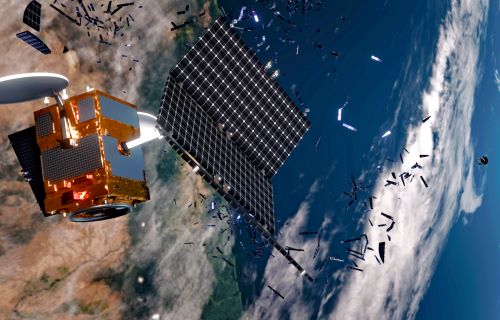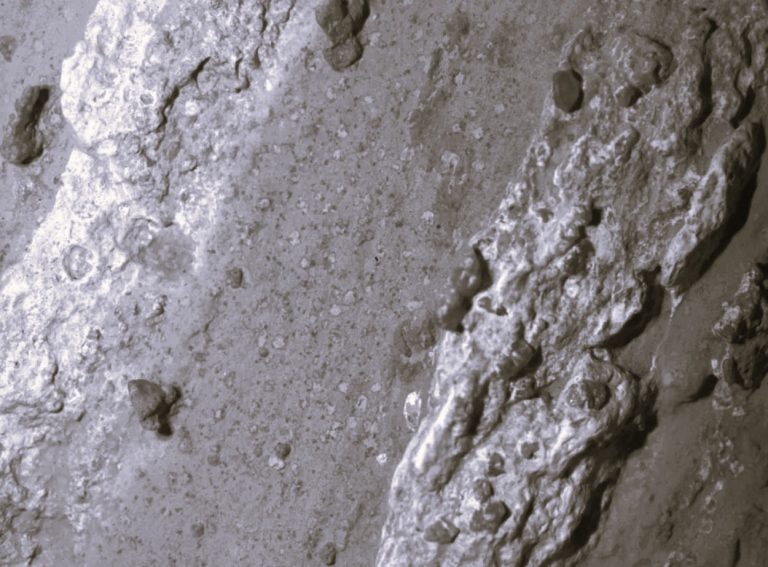

As Earth’s orbit becomes increasingly congested, the time to act is now.

By Matthew A. McIntosh
Public Historian
Brewminate
Introduction
In the early days of space exploration, the phrase “space is big” felt reassuring — a limitless expanse where humanity could expand without consequence. But six decades into the space age, a more sobering truth has emerged: the orbital environment around Earth is anything but infinite. It is congested, contested, and increasingly contaminated. The dazzling achievements of satellites, space stations, and deep-space missions have left behind an unintended legacy — a cloud of dangerous debris that threatens to derail future exploration and destabilize critical infrastructure.
As of today, Earth’s orbit hosts more than 36,000 tracked pieces of space debris larger than 10 cm, over a million fragments between 1 and 10 cm, and hundreds of millions of microscopic particles too small to track yet still dangerous. These are not harmless leftovers; they are hypersonic bullets traveling up to 17,500 miles per hour, capable of destroying spacecraft, jeopardizing astronaut safety, and triggering cascading collisions. If left unaddressed, this growing cloud of orbital refuse could lock humanity out of space — a phenomenon known as the Kessler Syndrome — for generations.
So what can we do? How do we deal with space junk before it deals with us?
Designing for Deorbit: Engineering with an Expiration Date
One of the most promising paths forward is to design satellites with built-in mechanisms for responsible end-of-life disposal. This means including onboard propulsion or drag-enhancing devices (like sails or tethers) that can deorbit the spacecraft after their mission ends. For satellites in low Earth orbit (LEO), international guidelines already recommend deorbiting within 25 years — but compliance is inconsistent, and enforcement is weak.
Newer models, such as SpaceX’s Starlink satellites, are increasingly being built with automated deorbiting systems. However, these designs must become the global norm. Regulatory bodies and launch licensing agencies should require deorbiting capabilities as a condition for orbital deployment. Engineering satellites to clean up after themselves isn’t glamorous, but it’s essential.
Active Debris Removal: Taking Out the Trash
For debris already in orbit — derelict satellites, rocket stages, and shattered fragments — the only option is active removal. This is one of the most complex challenges in space policy and technology. It’s not easy to catch and retrieve an object hurtling through orbit, especially one that wasn’t built to be grabbed. But it’s not impossible.
Several initiatives are currently testing ways to do just that. The European Space Agency’s ClearSpace-1 mission, scheduled for launch in the late 2020s, will attempt to capture and deorbit a single piece of space junk using robotic arms. Other concepts include harpoons, nets, magnets, ion beams, and even lasers to either collect debris or nudge it into decay orbits.
However, most of these are still prototypes, and the cost remains staggering — hundreds of millions to remove just a few objects. Governments and the private sector must work together to fund these efforts, possibly using a shared burden model like the one applied to international maritime cleanup. After all, a catastrophic collision could cost billions.
Creating a Space Traffic Control System: From Chaos to Coordination
Unlike roads, oceans, or airspace, Earth’s orbit currently has no real traffic control. Satellite operators rely on shared databases (like those from the U.S. Space Surveillance Network), but updates are manual, tracking is imperfect, and communication between operators is often slow or nonexistent.
A more robust space traffic management (STM) infrastructure is urgently needed. This would involve real-time tracking of all space objects, centralized coordination of maneuvers, and possibly even AI-driven systems to predict and prevent collisions. The U.S. Department of Commerce and agencies like ESA have begun laying the groundwork for such systems, but international buy-in is essential.
Think of it as building an air traffic control tower for a sky with tens of thousands of invisible planes, all moving faster than a bullet.
Legal and Policy Frameworks: From Guidelines to Mandates
One of the most significant barriers to effective space debris mitigation is the absence of enforceable global law. The 1967 Outer Space Treaty establishes basic principles of non-weaponization and peaceful use but is silent on debris cleanup. The UN Committee on the Peaceful Uses of Outer Space (COPUOS) has issued voluntary guidelines, but these lack enforcement mechanisms.
We need a binding international treaty on orbital debris — one that sets universal standards for deorbiting, requires compliance with STM protocols, and creates penalties for reckless behavior (such as anti-satellite missile tests). Just as the world came together to regulate maritime dumping and ozone-depleting chemicals, it must unite to protect the shared environment of near-Earth space.
Economic Incentives: Turning Cleanup into Capital
Governments and international bodies can also create market-based incentives to drive innovation in debris removal. This might include:
- Tax credits or launch discounts for companies that build deorbiting systems into their satellites.
- Debris removal credits, akin to carbon credits, that allow companies to earn compensation for cleaning up orbit.
- Bounties for retrieving high-risk debris items (especially large rocket bodies) could jumpstart a commercial space sanitation industry.
Private companies such as Astroscale and Northrop Grumman are already exploring commercial debris servicing — including life-extension modules, satellite refueling, and orbital towing. With the right incentives, “space janitor” could become a legitimate business sector.
Public Awareness and Cultural Shift: Making Space a Commons Worth Protecting
Ultimately, dealing with space junk requires a shift in how we think about space itself. It must no longer be seen as a limitless frontier but as a finite and fragile commons. Just as the environmental movement transformed our attitudes about oceans, forests, and the atmosphere, we must cultivate a similar ethic of responsibility toward orbital space.
This means educating the public, updating university engineering curricula to include orbital sustainability, and encouraging media to reflect the risks and responsibilities of space activity. The vision of a clean, accessible space must compete with the romanticism of conquest and expansion — because one cannot exist without the other.
Conclusion: Before the Sky Falls
The stars have always called to us. But now, our journey toward them is imperiled not by natural forces, but by the clutter of our own making. The Earth is wrapped in a shroud of silent hazards, a junkyard in motion that grows with every launch and lingers long after missions end.
If we do nothing, we may lose access to orbit — not in theory, but in real and devastating terms. Weather prediction, GPS, global communication, scientific research, and even national security all depend on a clean and safe orbital environment.
This is not a technological impossibility. It is a political, economic, and ethical challenge — and one we can rise to meet. But time is short. The orbital lanes are crowded, and the debris cloud thickens every year. We must act while we still can. Before the final frontier closes — not because of distance or danger — but because we turned it into a dump and forgot to take out the trash.
Originally published by Brewminate, 07.08.2025, under the terms of a Creative Commons Attribution-NonCommercial-NoDerivatives 4.0 International license.


